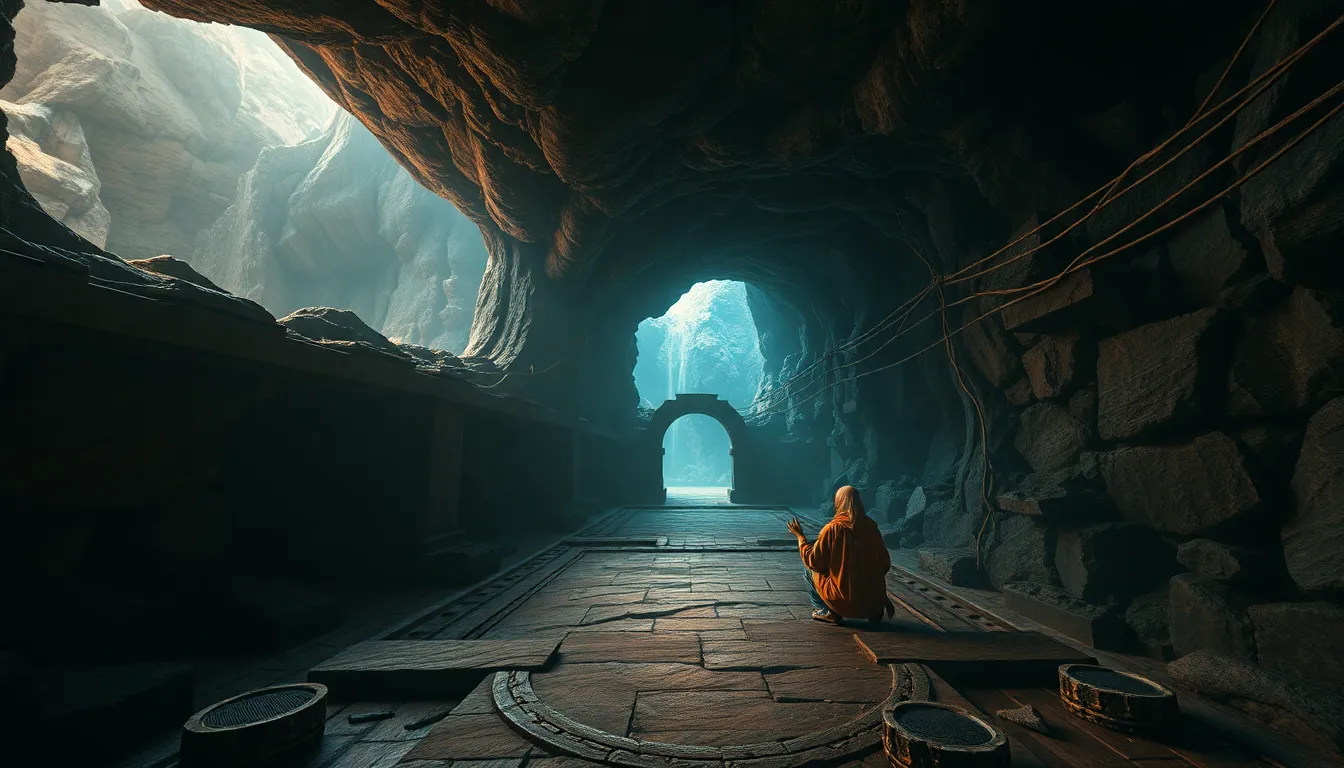Exploring the Underworld: Myths That Will Leave You Breathless
Introduction: The Allure of the Underworld
The concept of the underworld has captivated human imagination across cultures and epochs. It serves as a realm where souls journey after death, often shrouded in mystery and myth. From ancient civilizations to modern interpretations, the underworld embodies our deepest fears and curiosities about life, death, and what lies beyond. This article aims to explore the rich tapestry of underworld myths from various cultures, delving into their significance and the timeless themes they convey.
The Underworld in Ancient Mythology
Underworld beliefs have been integral to many ancient civilizations, each portraying their version of this enigmatic realm. Here are some notable cultures:
- Sumerian: The Sumerians envisioned a dark and dreary underworld known as Kur, ruled by the goddess Ereshkigal.
- Egyptian: The Egyptians believed in the Duat, a complex afterlife realm where souls faced judgment.
- Greek: The Greeks depicted the underworld as Hades, a place of both punishment and reward.
- Norse: In Norse mythology, the underworld encompasses realms like Hel and Niflheim, each with distinct characteristics.
Each culture’s interpretation reveals not only their beliefs about the afterlife but also their values and moral standards.
Hades: The Greek Underworld
The Greek underworld, known as Hades, is a complex and multifaceted realm. It is often depicted as a shadowy place beneath the earth, divided into various regions:
- Elysium: A paradise for virtuous souls.
- Tartarus: A pit of torment for the wicked.
- The Asphodel Meadows: A neutral zone for ordinary souls.
Key myths associated with Hades include:
- Persephone’s Abduction: Hades’ kidnapping of Persephone, leading to the seasonal cycle of life and death.
- Orpheus’s Journey: The tale of Orpheus, who ventured into Hades to rescue his beloved Eurydice, illustrating love’s power and the inevitability of death.
The Egyptian Duat: A Journey Through the Afterlife
The Duat serves as the Egyptian equivalent of the underworld, a complex realm that souls navigate after death. This journey is fraught with challenges and trials, with the ultimate goal of reaching the Field of Reeds, a paradise akin to Elysium.
Key figures in the Duat include:
- Osiris: The god of the afterlife who judges the dead.
- Anubis: The god associated with mummification and the protection of graves.
The judgment process involves weighing the heart of the deceased against the feather of Ma’at (truth). A heart lighter than the feather signifies a virtuous life, granting entry to paradise, while a heavier heart leads to annihilation.
Yggdrasil and the Norse Underworld Realms
In Norse mythology, Yggdrasil, the Tree of Life, connects all realms, including the various underworlds. Key realms include:
- Hel: A realm for those who did not die a heroic death.
- Niflheim: A cold, misty realm of the dead, often associated with suffering.
Norse myths emphasize the interconnectedness of life and death, with Yggdrasil symbolizing the cycle of existence.
The Underworld in Eastern Mythologies
Eastern mythologies also present unique interpretations of the underworld. For instance:
- Chinese Diyu: A complex underworld where souls undergo various trials and experiences based on their earthly deeds.
- Hindu Naraka: A temporary realm where souls are punished for their sins before reincarnation.
These realms highlight the moral frameworks within Eastern philosophies, emphasizing karma and the cyclical nature of life.
Modern Interpretations of Underworld Myths
Contemporary literature, films, and art have reimagined ancient underworld myths, bringing them to new audiences. Examples include:
- Dante’s Inferno: A literary exploration of the afterlife that draws heavily from classical sources.
- Films like “Hercules” and “What Dreams May Come”: These portrayals reflect and adapt ancient themes for modern viewers.
This reimagining keeps the essence of these myths alive, demonstrating their lasting relevance.
Symbolism and Themes in Underworld Myths
Underworld myths often explore profound themes such as:
- Death and Rebirth: Many myths emphasize the cyclical nature of existence.
- Morality: The consequences of one’s actions in life often determine their fate in the underworld.
- Human Consciousness: These myths reflect our psychological struggles with mortality and the unknown.
The symbolism found in these narratives offers insight into human nature and our understanding of existence.
The Role of the Underworld in Morality and Ethics
Underworld myths have profoundly shaped cultural views on morality and ethics. They often serve as cautionary tales, reminding individuals of the consequences of their actions:
- Virtue and Vice: Characters in these myths often face trials that reflect their moral choices.
- Afterlife Consequences: Many cultures believed that one’s fate in the afterlife was directly influenced by their earthly behavior.
This moral framework has influenced societal norms and the concept of justice throughout history.
Conclusion: The Timeless Fascination with the Underworld
Despite the passage of time, the underworld remains a captivating theme in human thought and culture. The myths surrounding it continue to resonate, offering valuable lessons about morality, life, and death. As we explore these ancient narratives, we find that they not only reflect the fears and hopes of past societies but also hold relevance in our modern world. The allure of the underworld invites us to ponder our existence and what lies beyond, urging us to seek deeper understanding and connection with these timeless tales.



